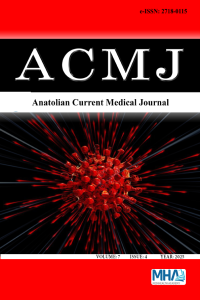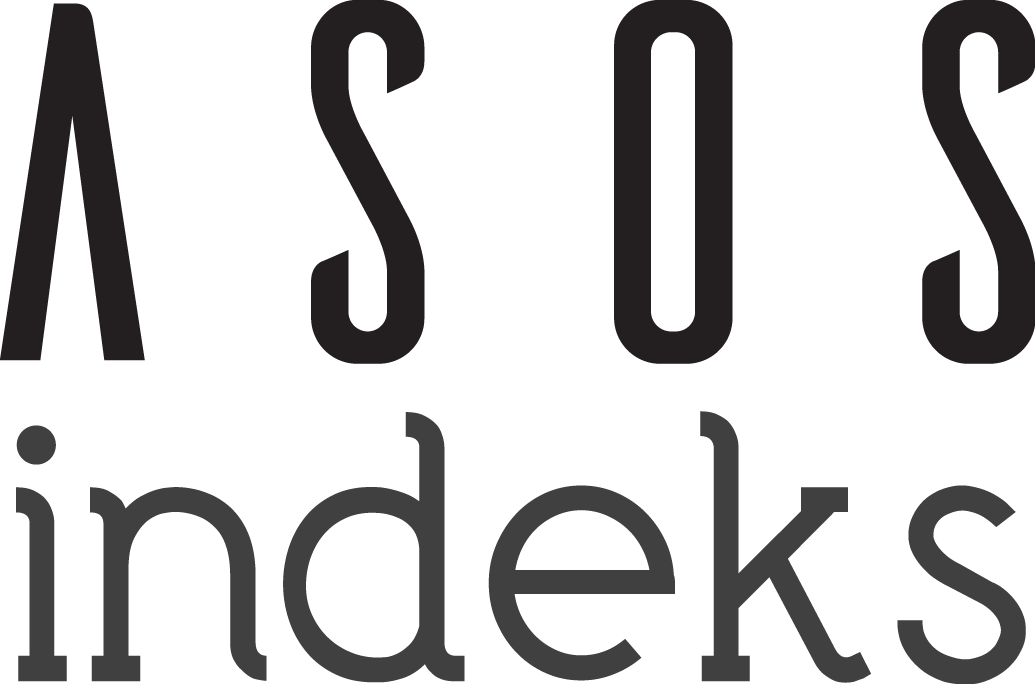The moderating role of insight in the relationship between object relations and defense mechanisms in adults
Abstract
Aims: This study investigates the moderating role of insight in the association between object relational patterns and defense mechanisms among adults. Grounded in psychoanalytic object relations theory, the research underscores the lasting influence of early relational experiences on the formation of self-structure and defensive functioning.
Methods: The sample comprised 412 adult volunteers aged between 18 and 65, with individuals reporting psychiatric diagnoses excluded from participation. Participants completed the Bell Object Relations and Reality Testing Inventory (BORRTI), the Insight Scale, and the Defense Styles Test-40. Data analysis was conducted using SPSS 27.0 and Hayes’ PROCESS Macro v4.2 (model 1). Correlational analyses were performed alongside moderation analyses to assess whether insight modulates the relationship between object relations and defense mechanisms—specifically immature, neurotic, and mature defenses.
Results: Correlational results indicated that higher levels of pathological object relational features were significantly associated with lower insight. Moreover, immature defense styles were positively correlated with dimensions such as egocentricity and social incompetence. Moderation analyses revealed that insight significantly buffered the effect of both egocentricity (B=–0.10, p=.003) and social incompetence (B=–0.17, p=.004) on the use of immature defenses. No significant moderation effects emerged in relation to neurotic or mature defense mechanisms. Interaction plots illustrated that as insight increased, the influence of maladaptive object relations on immature defenses diminished.
Conclusion: The findings suggest that insight functions as a psychological resource that may attenuate the reliance on primitive defense mechanisms in the presence of pathological object relational patterns. These results point to the potential clinical value of fostering insight within psychoanalytic psychotherapy, as doing so may contribute to the development of more adaptive defense functioning and improved psychological integration. Enhancing insight may thus serve as a pivotal intervention target in efforts to interrupt maladaptive relational-defensive cycles.
References
- Mahler MS, Pine F, Bergman A. The psychological birth of the human infant: symbiosis and individuation. Basic Books; 1975. doi:10.1080/00797308.1974.11822615
- Kernberg OF. Sınır durumlar ve patolojik narsisizm (M. Atakay, Çev.). Metis Yayınları; 2012.
- Fonagy P, Target M. Psychoanalytic theories: perspectives from developmental psychopathology. Whurr Publishers; 2003.
- Vaillant GE. Ego mechanisms of defense and personality psychopathology. J Abnorm Psychol. 1994;103(1):44-50. doi:10.1037// 0021-843x.103.1.44
- Cramer P. Understanding defense mechanisms. Psychoanalytic Psychol. 2015;32(4):630-641. doi:10.1521/pdps.2015.43.4.523
- Perry JC, Bond M. Change in defense mechanisms during long-term dynamic psychotherapy and five-year outcome. Am J Psychiatry. 2012; 169(9):916-925. doi:10.1176/appi.ajp.2012.11091403
- Kramer U, De Roten Y, Michel L, Despland JN. Early change in defence mechanisms and coping in short-term dynamic psychotherapy: relations with symptoms and alliance. Clin Psychol Psychother. 2009;16(5):408-417. doi:10.1002/cpp.616
- Grant AM, Franklin J, Langford P. The self-reflection and insight scale: a new measure of private self-consciousness. Social Behavior and Personality. 2002;30(8):821-836. doi:10.2224/sbp.2002.30.8.821
- Høglend P, Hagtvet K. Change mechanisms in psychotherapy: Both improved insight and improved affective awareness are necessary. J Consult Clin Psychol. 2019;87(4):332-344. doi:10.1037/ccp0000381
- de Roten Y, Djillali S, Crettaz von Roten F, Despland JN, Ambresin G. Defense mechanisms and treatment response in depressed inpatients.Front Psychol. 2021;12:633939. doi:10.3389/fpsyg.2021.633939
- Uluç S, Tüzün Z, Haselden M, Erbaş SP. Bell nesne ilişkileri ve gerçeği değerlendirme ölçeğinin (BORRTI) Türkçe’ye uyarlama çalışması. Klinik Psikiyatri Dergisi. 2015;18(4):112-123.
- Akdoğan R, Türküm AS. Insight Scale for nonclinical university students: validity and reliability analysis. Measurement and Evaluation in Counseling and Development. 2018;51(4):250-262. doi:10.1080/07481756. 2017.1413941
- Yılmaz N, Gençöz T, Ak M. Savunma Biçimleri Testi’nin psikometrik özellikleri: güvenirlik ve geçerlik çalışması. Türk Psikiyatri Dergisi. 2007;18(3):244-253.
- Hayes AF. Introduction to mediation, moderation, and conditional process analysis: a regression-based approach (2nd ed.). New York, NY: The Guilford Press; 2017.
- Bell MD. Bell object relations and reality testing inventory (BORRTI) manual. California: Western Psychological Services; 1995.
- Bilge Y, Bilge Y. Aleksitimi ve psikolojik belirtiler arasındaki ilişkide savunma mekanizmaları ve içgörünün aracı rolü. Klinik Psikoloji Dergisi. 2021;5(1):1-12. doi:10.5455/kpd.26024438m000029
- Gholami Zarch M, Taghvaei D, Pirani Z. Modeling narcissistic personality and object relations with the mediating role of defense mechanisms. J Adolescent Youth Psychological Studies. 2024;5(5):59-67. doi:10.61838/kman.jayps.5.5.8
- Tanzilli A, Di Giuseppe M, Giovanardi G, et al. Mentalization, attachment, and defense mechanisms: a Psychodynamic Diagnostic Manual-2-oriented empirical investigation. Res Psychother. 2021;24(1): 531. doi:10.4081/ripppo.2021.531
- Choi-Kain LW, Gunderson JG. Mentalization: ontogeny, assessment, and application in the treatment of borderline personality disorder. Am J Psychiatry. 2008;165(9):1127-1135. doi:10.1176/appi.ajp.2008.07081360
- Tanzilli A, Cibelli A, Liotti M, Fiorentino F, Williams R, Lingiardi V. Personality, defenses, mentalization, and epistemic trust related to pandemic containment strategies and the COVID-19 vaccine: a sequential mediation model. Int J Environ Res Public Health. 2022;19(21): 14290. doi:10.3390/ijerph192114290
- Di Giuseppe M, Perry JC, Prout TA, Conversano C. Editorial: Recent empirical research and methodologies in defense mechanisms: defenses as fundamental contributors to adaptation. Front Psychol. 2021;12: 802602. doi:10.3389/fpsyg.2021.802602
- Yeomans FE, Clarkin JF, Kernberg OF. Transference-focused psychotherapy for borderline personality disorder: a clinical guide. Washington, DC: American Psychiatric Publishing; 2015. doi:10.1176/appi.books.9781615371006
- Bateman A, Fonagy P. Mentalization-based treatment for personality disorders (Rev. ed.). Oxford, UK: Oxford University Press; 2016. doi:10. 1093/med:psych/9780199680375.001.0001
- Vaillant GE. Ego mechanisms of defense: a guide for clinicians and researchers. Washington, DC: American Psychiatric Pres; 1992.
Yetişkin bireylerde nesne ilişkileri ile savunma mekanizmaları arasındaki ilişkide içgörü düzeyinin düzenleyici rolü
Abstract
Amaç: Bu araştırma, yetişkin bireylerde nesne ilişkileri örüntüleri ile savunma mekanizmaları arasındaki ilişkide içgörü düzeyinin düzenleyici rolünü incelemeyi amaçlamaktadır. Psikanalitik kuramlardan nesne ilişkileri teorisi temel alınarak yürütülen çalışmada, erken dönem yaşantıların bireyin benlik yapılanması ve savunma örgütlenmesi üzerindeki etkisi vurgulanmıştır.
Yöntem: Araştırma, 18–65 yaş aralığında 412 gönüllü birey ile yürütülmüştür. Psikiyatrik tanısı bulunan bireyler dışlanmıştır. Katılımcılara Bell Nesne İlişkileri ve Gerçeği Değerlendirme Ölçeği (BORRTI), İçgörü Ölçeği ve Savunma Biçimleri Testi uygulanmıştır. Veriler SPSS 27.0 ve Hayes’in PROCESS Macro v4.2 (Model 1) ile analiz edilmiştir. Korelasyon ve moderasyon analizleri yürütülmüş, özellikle içgörünün düzenleyici etkisi immatür, nevrotik ve matür savunma biçimleri açısından test edilmiştir.
Bulgular: Yapılan korelasyon analizlerinde, nesne ilişkilerinin patolojik alt boyutları ile içgörü düzeyleri arasında negatif ilişkiler bulunmuştur. İmmatür savunmalar ile egosantrizm ve sosyal yetersizlik arasında anlamlı pozitif ilişkiler saptanmıştır. Moderasyon analizleri sonucunda, içgörü düzeyinin egosantrizm (B = –0.10, p = .003) ve sosyal yetersizlik (B = –0.17, p = .004) ile immatür savunmalar arasındaki ilişkiyi istatistiksel olarak anlamlı biçimde zayıflattığı görülmüştür. Ancak nevrotik ve matür savunmalar açısından anlamlı bir düzenleyici etkisi gözlenmemiştir. Görselleştirilen etkileşim grafiklerinde de, içgörü düzeyi yükseldikçe patolojik nesne ilişkilerinin immatür savunmalar üzerindeki etkisinin azaldığı ortaya konmuştur.
Sonuç: Çalışma, içgörünün bireyin savunma mekanizmalarının niteliğinde önemli bir düzenleyici rol üstlenebileceğini göstermiştir. Özellikle ilkel savunma mekanizmalarının kullanımını azaltma yönünde koruyucu etkisi olduğu görülmüştür. Bu bulgular, psikanalitik terapi süreçlerinde içgörüyü artırmaya yönelik müdahalelerin, danışanların savunma düzeylerini olgunlaştırma ve psikolojik işlevselliği artırma potansiyelini vurgulamaktadır. Terapötik bağlamda, içgörünün geliştirilmesi, nesne ilişkileri ile savunma örgütlenmesi arasındaki patolojik döngüyü kırmada kritik bir unsur olabilir.
References
- Mahler MS, Pine F, Bergman A. The psychological birth of the human infant: symbiosis and individuation. Basic Books; 1975. doi:10.1080/00797308.1974.11822615
- Kernberg OF. Sınır durumlar ve patolojik narsisizm (M. Atakay, Çev.). Metis Yayınları; 2012.
- Fonagy P, Target M. Psychoanalytic theories: perspectives from developmental psychopathology. Whurr Publishers; 2003.
- Vaillant GE. Ego mechanisms of defense and personality psychopathology. J Abnorm Psychol. 1994;103(1):44-50. doi:10.1037// 0021-843x.103.1.44
- Cramer P. Understanding defense mechanisms. Psychoanalytic Psychol. 2015;32(4):630-641. doi:10.1521/pdps.2015.43.4.523
- Perry JC, Bond M. Change in defense mechanisms during long-term dynamic psychotherapy and five-year outcome. Am J Psychiatry. 2012; 169(9):916-925. doi:10.1176/appi.ajp.2012.11091403
- Kramer U, De Roten Y, Michel L, Despland JN. Early change in defence mechanisms and coping in short-term dynamic psychotherapy: relations with symptoms and alliance. Clin Psychol Psychother. 2009;16(5):408-417. doi:10.1002/cpp.616
- Grant AM, Franklin J, Langford P. The self-reflection and insight scale: a new measure of private self-consciousness. Social Behavior and Personality. 2002;30(8):821-836. doi:10.2224/sbp.2002.30.8.821
- Høglend P, Hagtvet K. Change mechanisms in psychotherapy: Both improved insight and improved affective awareness are necessary. J Consult Clin Psychol. 2019;87(4):332-344. doi:10.1037/ccp0000381
- de Roten Y, Djillali S, Crettaz von Roten F, Despland JN, Ambresin G. Defense mechanisms and treatment response in depressed inpatients.Front Psychol. 2021;12:633939. doi:10.3389/fpsyg.2021.633939
- Uluç S, Tüzün Z, Haselden M, Erbaş SP. Bell nesne ilişkileri ve gerçeği değerlendirme ölçeğinin (BORRTI) Türkçe’ye uyarlama çalışması. Klinik Psikiyatri Dergisi. 2015;18(4):112-123.
- Akdoğan R, Türküm AS. Insight Scale for nonclinical university students: validity and reliability analysis. Measurement and Evaluation in Counseling and Development. 2018;51(4):250-262. doi:10.1080/07481756. 2017.1413941
- Yılmaz N, Gençöz T, Ak M. Savunma Biçimleri Testi’nin psikometrik özellikleri: güvenirlik ve geçerlik çalışması. Türk Psikiyatri Dergisi. 2007;18(3):244-253.
- Hayes AF. Introduction to mediation, moderation, and conditional process analysis: a regression-based approach (2nd ed.). New York, NY: The Guilford Press; 2017.
- Bell MD. Bell object relations and reality testing inventory (BORRTI) manual. California: Western Psychological Services; 1995.
- Bilge Y, Bilge Y. Aleksitimi ve psikolojik belirtiler arasındaki ilişkide savunma mekanizmaları ve içgörünün aracı rolü. Klinik Psikoloji Dergisi. 2021;5(1):1-12. doi:10.5455/kpd.26024438m000029
- Gholami Zarch M, Taghvaei D, Pirani Z. Modeling narcissistic personality and object relations with the mediating role of defense mechanisms. J Adolescent Youth Psychological Studies. 2024;5(5):59-67. doi:10.61838/kman.jayps.5.5.8
- Tanzilli A, Di Giuseppe M, Giovanardi G, et al. Mentalization, attachment, and defense mechanisms: a Psychodynamic Diagnostic Manual-2-oriented empirical investigation. Res Psychother. 2021;24(1): 531. doi:10.4081/ripppo.2021.531
- Choi-Kain LW, Gunderson JG. Mentalization: ontogeny, assessment, and application in the treatment of borderline personality disorder. Am J Psychiatry. 2008;165(9):1127-1135. doi:10.1176/appi.ajp.2008.07081360
- Tanzilli A, Cibelli A, Liotti M, Fiorentino F, Williams R, Lingiardi V. Personality, defenses, mentalization, and epistemic trust related to pandemic containment strategies and the COVID-19 vaccine: a sequential mediation model. Int J Environ Res Public Health. 2022;19(21): 14290. doi:10.3390/ijerph192114290
- Di Giuseppe M, Perry JC, Prout TA, Conversano C. Editorial: Recent empirical research and methodologies in defense mechanisms: defenses as fundamental contributors to adaptation. Front Psychol. 2021;12: 802602. doi:10.3389/fpsyg.2021.802602
- Yeomans FE, Clarkin JF, Kernberg OF. Transference-focused psychotherapy for borderline personality disorder: a clinical guide. Washington, DC: American Psychiatric Publishing; 2015. doi:10.1176/appi.books.9781615371006
- Bateman A, Fonagy P. Mentalization-based treatment for personality disorders (Rev. ed.). Oxford, UK: Oxford University Press; 2016. doi:10. 1093/med:psych/9780199680375.001.0001
- Vaillant GE. Ego mechanisms of defense: a guide for clinicians and researchers. Washington, DC: American Psychiatric Pres; 1992.
Details
| Primary Language | English |
|---|---|
| Subjects | Clinical Psychology |
| Journal Section | Research Articles |
| Authors | |
| Publication Date | July 28, 2025 |
| Submission Date | June 27, 2025 |
| Acceptance Date | July 13, 2025 |
| Published in Issue | Year 2025 Volume: 7 Issue: 4 |
TR DİZİN ULAKBİM and International Indexes (1b)
Interuniversity Board (UAK) Equivalency: Article published in Ulakbim TR Index journal [10 POINTS], and Article published in other (excuding 1a, b, c) international indexed journal (1d) [5 POINTS]
Note: Our journal is not WOS indexed and therefore is not classified as Q.
You can download Council of Higher Education (CoHG) [Yüksek Öğretim Kurumu (YÖK)] Criteria) decisions about predatory/questionable journals and the author's clarification text and journal charge policy from your browser. https://dergipark.org.tr/tr/journal/3449/file/4924/show
Journal Indexes and Platforms:
TR Dizin ULAKBİM, Google Scholar, Crossref, Worldcat (OCLC), DRJI, EuroPub, OpenAIRE, Turkiye Citation Index, Turk Medline, ROAD, ICI World of Journal's, Index Copernicus, ASOS Index, General Impact Factor, Scilit.The indexes of the journal's are;
The platforms of the journal's are;
|
The indexes/platforms of the journal are;
TR Dizin Ulakbim, Crossref (DOI), Google Scholar, EuroPub, Directory of Research Journal İndexing (DRJI), Worldcat (OCLC), OpenAIRE, ASOS Index, ROAD, Turkiye Citation Index, ICI World of Journal's, Index Copernicus, Turk Medline, General Impact Factor, Scilit
Journal articles are evaluated as "Double-Blind Peer Review"
All articles published in this journal are licensed under a Creative Commons Attribution 4.0 International License (CC BY 4.0)














